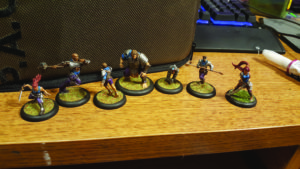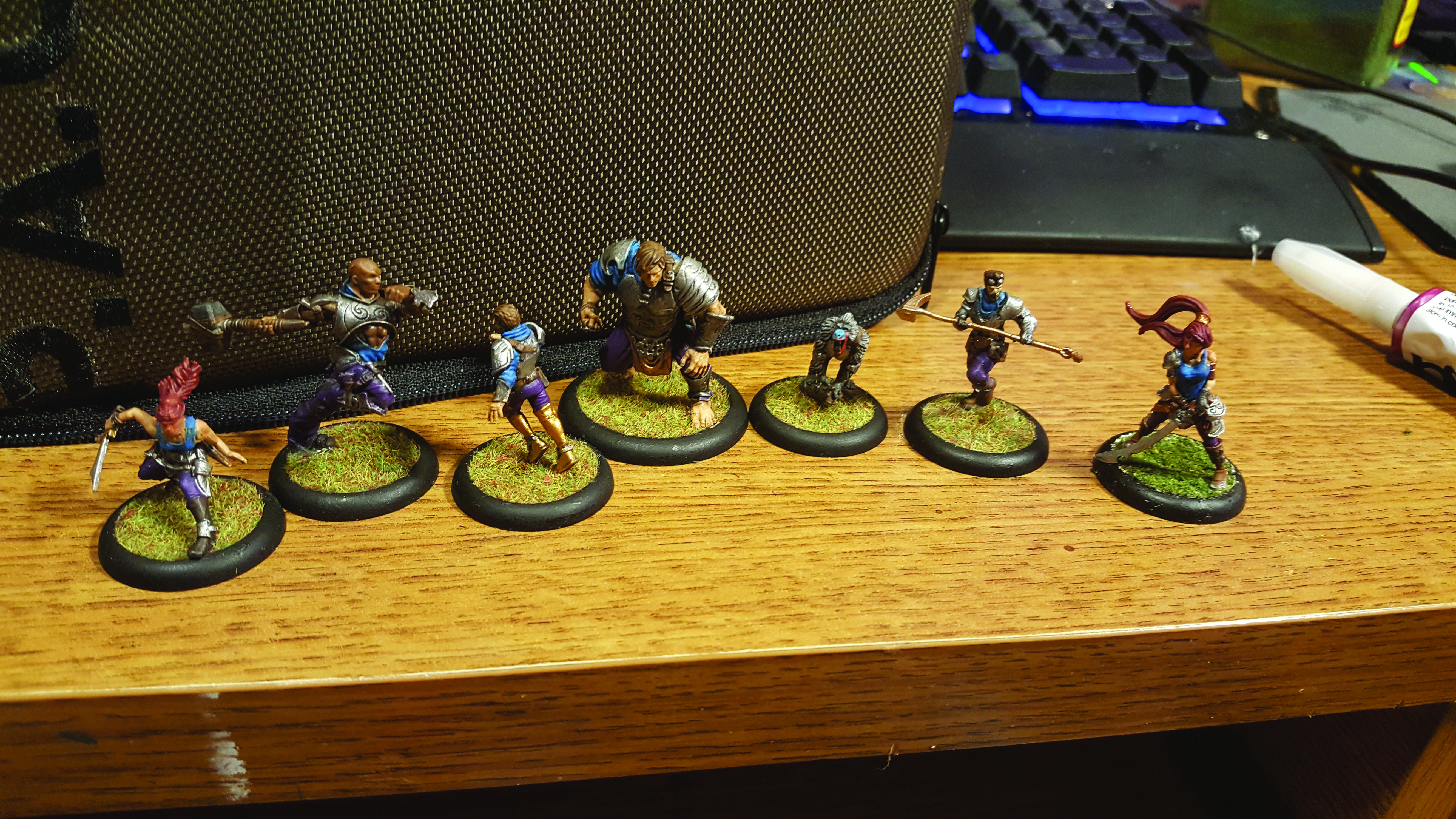Guild Ball: A tabletop game to consider

We are in what is, perhaps, one of the most plugged-in years of the 21st century. The capabilities of our devices and the existence of the “Internet of Things” has everyone plugged in and tuned out.
But what if I told you that there are some great alternatives? A game that engages you mentally, cultivates some pretty fantastic social skills, and brings out the best of our creative natures. A game that, unlike the infinite number of video games and other forms of electronic entertainment, will bring you out of your comfort zone and onto the playing field.
This game is called “Guild Ball” (GB). “Guild Ball” is what is known as a “Tabletop Fantasy Medieval Football Game,” per Steamforged Games, the creator. Us players, though, often refer to it as a skirmish game, while others might call it “mob football.”
It’s important to note here that “football” refers, of course, to global football, a.k.a. soccer to us in the states. The object of “Guild Ball” is simple: score 12 points. This can be achieved by successfully kicking the ball into the opponent’s goal for four points, taking a player out for two points or taking a mascot out for one point. How you achieve this varies greatly between guilds, as each has their own unique abilities and style of play. This is done on a 3×3 pitch, usually a neoprene mat, and includes some obstacles and other environmental hazards (or boons).
What is it, though, that makes “Guild Ball” so attractive? Why should someone play this over other tabletops, or play it at all? Here are some of the driving points that I along with many others have found that brought us to “Guild Ball.”
First, it’s Affordable. One of my absolute favorite parts about GB is that it’s so dang cheap–at least relative to other tabletops. A new starter box, which includes a Captain and two other players, will be about $35.
After that, the average teammate costs around $15 with tax. To the college kid budget, this might seem like a bit much, but to put things in perspective, we can look at other tabletops such as “Warhammer.” For both 40k and Fantasy (now Age of Sigmar), a starter box costs $85. Additional units can be anywhere from $50 to $200.
Now, in the defense of the “Warhammer” games, they come with more models, and the sculpts are undeniably superb. But if you’re looking to play one game over the other, I’d absolutely make the case for “Guild Ball.” Collecting a full guild (eight or nine models), the measuring widgets, dice, pitch and so on will cost $200 or less. Most armies in “Warhammer” are at least $1000!
Also, “Guild Ball” has released the “Kick Off!” starter set. This box comes with TWO teams of six, dice, tokens, measuring devices AND a cardboard pitch (most games use that glossy, poster like paper).
In addition to its affordability, It’s Easy and Quick.The folks at Steamforged Games went far out of their way to combine their years of experience as top players and designers of war games to make a system that is intuitive, quick and easy. I jumped right in to GB, and, while the first game took some getting used to, things were really starting to click for me by the second one.
My very first match came almost three months after I initially bought the “Engineer” starter box. It was against a fellow by the name of Will VanDoom (yes, really). Will is a great guy to play games with, as he has a great attitude and solid knowledge of the rules for just about any game played on the tabletop.
He brought his Morticians, a spooky guild known for messing with their opponent’s head by causing lots of trouble through control. After about an hour and a half of play, he pulled off an easy win. However, I wasn’t discouraged in the slightest. “Guild Ball” was such a refreshing experience to play after slogging for hours in convoluted, messy games. We played our second match the next day, and, by then, I had the basics down pat.
Another perk of the game is that it is very social. There are a lot of points that I’ve considered, but in my interview with Sherwin Matthews, he made a very good point. He said that, “at the most local level, wargaming is about finding likeminded people and forming or joining communities.” It really is. I’ve already made a ton of friends from around the world, and there’s an instant bond of friendship because we share the same hobby. “I’ve never met you, but we could sit down and play a game just fine and become friends during that game,” Matthews said.
That has to be my favorite aspect of the entire genre as a whole, really. More than the game or painting the models. Making the friends I’ve made over the last few years has been invaluable. I’ve always struggled to fit in as a kid, and now I have somewhere I can go. While video games can be pretty social, too, finding someone who plays the same tabletop game as you is a bit more rare; thus, finding that next fan creates a much more exciting instant friendship.
I implore you all to go out, find something you think is weird, difficult or impossible and just try it. Ask people why they do it, why they love it, and let that seep in. Maybe that crazy level of passion and joy will spark something within and lead you places you never would have known before! That’s what life is all about, isn’t it?

